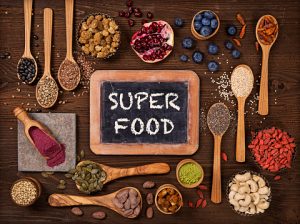
But the good news is that living and eating healthy doesn’t have to cost an arm and a leg. In fact, you can turn the staple foods of your diet into superfoods by making simple adjustments to the way you handle and store them.
No matter what your budget is, you don’t need to overspend on your health. Below you will uncover some superfood swaps that are more affordable, allowing you to stay on a budget and eat well too.
Simple tricks to get the most out of your food
Reheat that pasta: If you’re watching your carbs, reheating a cooked and chilled pasta seems like a smart choice. This converts the carbs in the pasta into a less absorbable form and reduces blood sugar spikes by 50 percent. So, yes to pasta salads, dinner leftovers, and cooking in batches! (This secret helps fight aging.)
Wound those veggies: Leafy vegetables are rich in health-boosting antioxidant compounds, and the best way to activate their protective properties is to slice the leaves into pieces (known as wounding). For best results, refrigerate your cut lettuce in a sealed container overnight.
Spice it up: Don’t be a stranger to a touch of chili here and there, be it a tiny slice of pepper or a dash of chili sauce. A study has found that adding chilies to your daily diet can significantly reduce those post-meal insulin spikes. It’s a great way to give an otherwise bland dish an exotic twist. But be careful: spicy food incites appetite.
Leave tomatoes out: As in, out of the fridge. When stored at room temperature, tomatoes continue to ripen and increase their levels of beneficial phytochemicals that have antioxidant and anti-inflammatory properties. (A molecule that can fight inflammation, oxidative stress, and so much more…)
Know your apples: Different types of apples differ not only in their taste and look, but also in their antioxidant levels. For example, a red delicious apple has double the benefits of an empire apple, while Braeburn apples are absolute champions when it comes to antioxidant content, according to a study by the University of Leeds.
Cook your spinach: Considered a superfood in its own right, you can get even more out of spinach if you cook it in a pan for a few minutes. This will boost its vitamin A levels threefold. Extra bonus: because spinach wilts so much, a serving of cooked leaves contains as much as five servings of raw spinach. Cooked spinach is a great addition to a warm salad, an omelet, or a sandwich.
Pick small potatoes: Potatoes skins are rich in fiber and phytonutrients, and this is particularly true for new potatoes. To double up their antioxidant content, slice them into thick pieces and keep them in the fridge for a couple of days.
Steam your kale: Kale is already a health food superstar—a must-have ingredient in every salad and smoothie. If you really want to boost its benefits, try steaming or microwaving it.
What we eat can either make us sick or make us strong. We owe it to our health to eat foods that will keep us running and will benefit us in the long run. Healthy eating is not expensive—eating healthy means eating smart. Implement these simple tips into your regular cooking practice and get ready to reap the benefits.